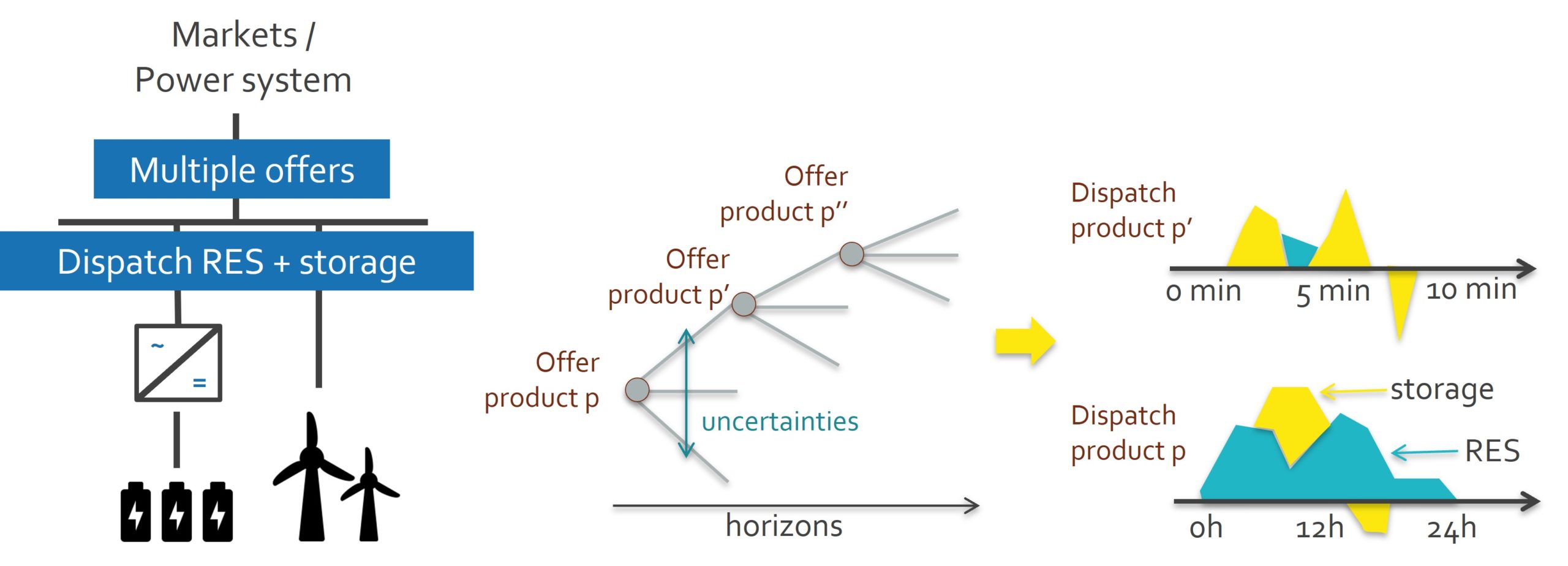Optimized Dispatch of RES with Storage
Joint optimization and dispatch of RES power plants and storage
Partner: EDP CNET
Actors involved: RES power Plants, Storage systems, Energy markets, Forecast service providers
Context |
Some RES plants are no longer receiving feed-in tariffs, so they have to participate in electricity markets with the same rules as the regular plants. However, forecasts are not accurate enough and the inherent intermittent nature of RES generation poses several challenges for their participation in electricity markets because producers are financially penalized if they do not comply with the plan.
Summary |
Optimized dispatch of RES with storage is a promising case since energy storage can provide the flexibility to plan RES plants output according to a desired production schedule, by flattening forecasting errors and absorbing the intermittence of production. In addition, the dispatch can occur when electricity prices are more favorable to RES producers, offering an opportunity for revenue enhancement (energy arbitrage).
It enables short-term rapid response to sudden loss of generation and a secure mid-term schedule. Besides this, the proposed use case also taps into the ancillary services market participation for an extra source of revenue.
Challenge |
How to optimize offers on markets / power systems and dispatch, over the range of products and horizons?
How to maximise the value (revenue on multiple markets / performance of multiple services) and minimize the costs (wear & tear RES + storage)?

Today, the optimization of offers and dispatch relies on model-based tools such as stochastic optimisation and model predictive control. As the number of products (and horizons) is large, the model chain is complex. Moreover, technical constraints related to the operation of the batteries should be taken in consideration.
Approach |
Data-driven approach: A machine learning algorithm optimizes the dispatch based on bids, observed prices, and updated forecasts of RES production and prices.

When the bids for electricity market participation are ready, the State of Charge (SoC) forecast of the batteries and the optimal plan for dispatching RES can be calculated. In real-time, the storage operation will be regularly recalculated, according to the actual renewable generation.
Finally, electricity is produced according to the plan and if deviations occur, the energy storage system is used to minimise them.
Innovative content of forecasting solution
Not only the forecast model will go beyond the state of the art, but the holistic approach between the production prediction and deviation minimization through storage will be innovative. If we add the modelling of uncertainties as a risk parameter, it only enhances the novelty of the approach.
Evaluation is foreseen in the experimentation site Cobadin.
KPI: Revenues at least equivalent to state-of-the-art solutions (revenue increased by +20-25% vs bidding on a single market)
